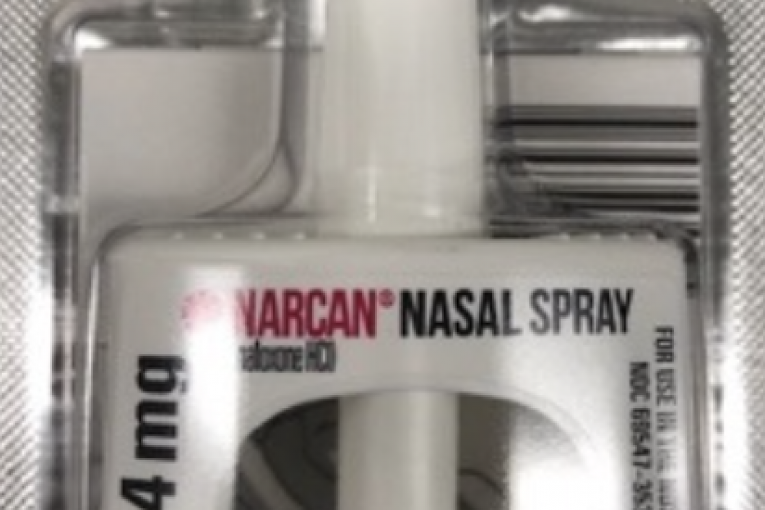
![]()
 IMAGE: Wikimedia Commons, https://commons.wikimedia.org/wiki/File:Narcan_product.jpg
IMAGE: Wikimedia Commons, https://commons.wikimedia.org/wiki/File:Narcan_product.jpg
By Milo Feldman
On March 29th, 2023, the United States Food and Drug Administration (FDA) approved the over-the-counter, non-prescription use of Narcan––the standard treatment for opioid overdose. Narcan is a 4mg naloxone dose administered nasally and it is the first naloxone product to be approved for non-prescription use.
There are still a few unknown effects of the decision. First, although it has been approved for over-the-counter (OTC) use, it is not yet certain when OTC Narcan will be available or how much it will cost. As of now, Narcan is available with a prescription and is covered by most insurance at little to no cost.
The impetus for making Narcan available for over-the-counter and non-prescription use is to increase access to life-saving aid. According to Patrizia Cavazzoni, director of the FDA Center for Drug Evaluation and Research, this decision is a part of the extensive efforts of the FDA to “combat the overdose crisis.”
However, the decision could be doing just the opposite, making Narcan absolutely inaccessible to people who relied on prescriptions covered by their insurance. The hope is that widely-available access to Narcan without having to go through a doctor and without insurance might decrease overdoses. But the fact is that if over-the-counter Narcan is more expensive than prescription Narcan, it might do just the opposite and have drastic consequences.
According to GoodRx, the cheapest Narcan nearby (on 4/3/23) is $129.25 at CVS Pharmacy in Davis for a standard box of two 4mg nasal sprays. While that cost might be covered by one’s insurance, obviously not everyone has insurance. People who are likely to go to a doctor, get a prescription, and have insurance, are a different demographic than people who have been unable to access prescription Narcan. Reasons include not being able to go to the doctor, having a stigma against opioid addiction, or because they do not have insurance.
The move to over-the-counter might be increasing the availability to some people but potentially fatally limiting access to others who cannot afford them, as over-the-counter drugs are not covered by Medicare Prescription Drug plans (PDPs).
The opioid epidemic in the United States soared during the pandemic, causing over 100,000 deaths in 2021, 50 percent more than pre-pandemic fatalities. The numbers seem minutely lower last year than in 2021: 81,000 deaths in the first 9 months of 2021 compared to 79,000 in 2022.
The response to the epidemic has been an “American crackdown” on opioids, targeting the over-prescribing of opioids by medical professionals. The crackdown was successful: prescription of opioids has dropped in every state in the last 10 years––50% nationally––yet these measures did not successfully combat opioid deaths.
Simply decreasing the prescription of opioids isn’t combatting opioid abuse or access. People are still using them, many unsafely, which is why the overdose and fatality from opioids continued to rise despite the opioid crackdown. Making Narcan available over-the-counter is just one measure that could effectively combat overdose. An earlier, pre-pandemic response to the opioid epidemic was the establishment of safe-injection sites in many cities.
Safe-injection sites provide exactly that: a safe place to use illicit drugs. Trained staff are present to ensure the injection is safe and sterile, and are ready to intervene in the event of an overdose. People come to the site with their own drugs and are given clean needles and a safe place to inject. Staff also have naloxone and breathing masks and are there to educate people about safe injection practices as well as resources for rehabilitation, medical care, and social programming.
The success of safe-injection sites in reducing overdose has thus been the most promising effort in the practice of harm-reduction as an approach to combatting the opioid epidemic. The push to make Narcan available over-the-counter seems to be a step in the right direction, as long as the cost isn’t a deterrent.
Based on the significant decrease in the prescription of opioids in the past decade, it seems that it is not reducing access to drugs that help reduce the harm associated with addiction, rather, working under the assumption that people will continue using drugs, ensuring that they have a safe place to do so, education on addiction treatment and safe practices, and further will need increased access to life-saving interventions in the case of overdose.